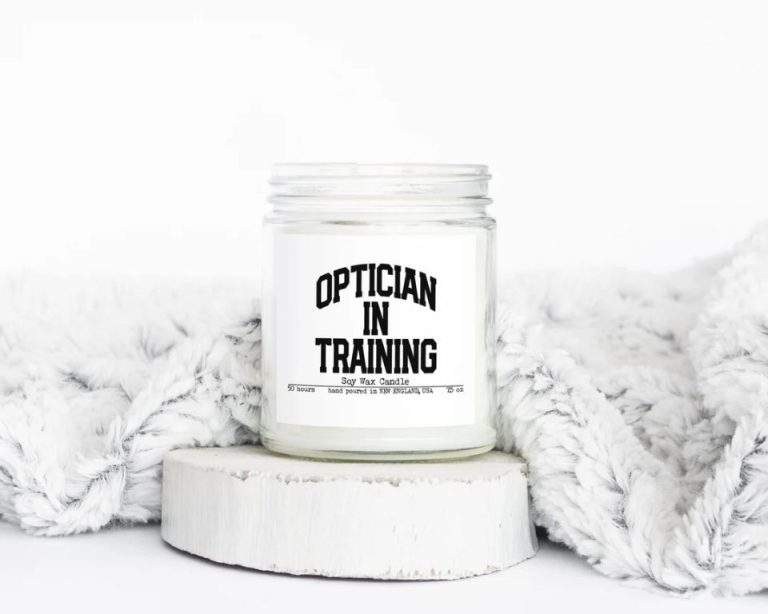Why Does My Wood Wick Flame Keep Going Out?
Wood wick candles are a unique type of candle that use a wood wick instead of a standard cotton wick. The wood wick is made from natural materials like bamboo and is designed to crackle and pop while burning, creating a pleasant campfire sound.
As the wax melts and travels up the wood wick, the wick itself partially burns and forms tiny carbonized cracks and spaces. When these spaces ignite, they create small explosions that result in the familiar crackling noise. Additionally, the partially burned and porous wooden wick promotes improved airflow and allows more oxygen to reach the flame, helping it stay lit.
When working properly, a wood wick candle will provide an enjoyable sensory experience through its iconic crackling sound and steady flame. However, there are times when the wood wick flame may go out unexpectedly. The root causes often come down to issues with the wick itself or the wax.
Wick Issues
One of the most common reasons a wood wick candle’s flame keeps going out is issues with the wick length. If the wick is too short, it may not be able to draw up enough melted wax to fuel the flame. On the other hand, if the wick is too long, it can clog with carbon deposits and prevent the fuel from reaching the flame.
As a general rule, the wick should be trimmed to 1⁄4 inch before lighting. However, depending on factors like wax composition and vessel shape, the ideal wick length can vary. Make small adjustments up or down to find the sweet spot where the flame burns steadily.
It’s also important to center the wick and make sure it stands straight up when pouring the wax. If the wick leans, the flame will follow the wick to the edge of the wax pool instead of melting straight down.
Wax Issues
One common reason a wood wick candle may have issues staying lit is due to the type of wax being used. Hard waxes like soy, palm, or paraffin can clog the cotton fibers of the wick, preventing the capillary action that brings fuel to the flame. As wax melts, the liquid wax travels up the wick using capillary action. If the wax is too hard or contains impurities, it can clog the wick and prevent this capillary flow. Harder waxes may also form a crust around the wick that restricts oxygen flow to the flame. Switching to a softer wax like coconut, beeswax, or a wax blend can help improve capillary action and minimize clogging issues.
Wick Trimming
A properly trimmed wick is key to getting the most out of your wood wick candle. As the candle burns down, the wick becomes longer and begins to bend over into the wax pool. This can cause the wick to douse itself in wax, preventing oxygen from getting to the embers.
Make sure to trim off the excess charred portions of the wick as needed. This ensures the tip of the wick stays straight and exposed at the top of the melted wax. Aim for about 1/4 inch of exposed wick above the melted wax pool. Any longer, and the wick may start generating excess black smoke. Keeping the wick trimmed also promotes a full melt pool and cleaner burn.
Trimming the wick regularly as the candle burns down is key to preventing tunneling and keeping your wood wick candle burning strong and steady throughout its life. Invest in a quality wick trimmer and snip the wick as needed for optimal performance.
Drafts
One very common reason for wood wick flames going out frequently is drafts in the room. Even a small breeze across the top of the candle can be enough to blow out the flame. This is because wood wick candles burn with a relatively low and narrow flame profile compared to regular candles.
To troubleshoot, try isolating the candle from any drafts. Move it away from windows, vents, fans, open doors, or other sources of moving air. Block the drafts with another object if needed. Also avoid lighting the candle in drafty areas to begin with.
Wood wick candles burn best in still indoor air. The flame relies on the rising heat to stay lit. So protecting the candle from air currents is key to keeping the flame going strong.
Insufficient Melting
Wood wick candles rely on melted wax to soak into the wood wick and act as fuel to keep the flame burning. If the wax is not melting sufficiently or there is not enough melted wax to reach the wick, the flame can easily go out.
There are a few key reasons why the wax may not be melting properly:
- The room temperature is too low – wax needs to be around 150-165°F to melt fully.
- The candle isn’t burning long enough to form a full melt pool.
- You are using an improper vessel like a candle holder that dissipates heat.
- The wax formulation is too hard for the environment – try a softer wax blend.
To troubleshoot, monitor the melt pool as the candle burns. It should reach the full diameter of the container to melt enough wax. Move the candle to a warmer area or burn it longer to establish a full melt pool. If the wax still doesn’t melt adequately, try a softer wax blend. The right wax viscosity is key for wood wick performance.
Dirty Containers
Over time, residue and soot can build up on the sides and bottom of candle containers. This buildup can clog the wick and prevent it from drawing up enough wax to sustain the flame.
Try cleaning the candle holder thoroughly with soap and water or rubbing alcohol to remove any film or debris. For severe buildup, fill the container with hot water and a denture or polishing tablet to help dissolve the wax and soils. A soft brush can help scrub off stubborn debris.
It’s a good idea to wash candle jars regularly to prevent soot accumulation. Burning candles on a protective surface like a candle plate or votive holder can also minimize residue on the container itself.
Keeping your candle holders clean is an easy way to help ensure proper wick performance and a strong, steady flame.
High Altitude
One potential cause of candles struggling to stay lit is high altitude. At high elevations, the air pressure is lower, resulting in less dense air. This thinner air contains less oxygen, which candles need to burn properly.
With less oxygen available, it becomes more difficult for the flame to receive enough oxygen to sustain itself. The lack of oxygen essentially “chokes” the flame out. This is why candles often sputter, flicker, and struggle to stay lit in high altitude locations.
If you are located at a high elevation, using candles formulated for high altitude may help. These candles contain more wax and bigger wicks to account for the thinner air. Making sure to trim wicks to the proper height can also help high altitude candles burn better. But even still, some fluctuation in the flame should be expected.
Low Quality Wicks
One of the most common reasons a wood wick candle struggles to stay lit is because it has a low quality wick. Not all wicks are created equal, and inferior wicks are prone to combustion issues. Cheap wicks made from low grade materials often have the following problems:
- Thicker cotton strands that don’t burn evenly.
- Wicks braided too loosely so they collapse into the wax.
- Wicks with impurities that clog the cotton.
- Wicks that are too thin or weak to stand upright.
- Wicks with an inconsistent diameter along the length.
Quality wicks are tightly braided from ultra fine strands of cotton free of debris. They have an even thickness and sturdy stiffness to stand up straight as the candle burns. When the wick quality is poor, the candle struggles to draw wax, the flame becomes unstable, and the wick continuously goes out.
Tips for Success
Here are some tips to help ensure your wood wick candle burns properly without the flame going out:
Trim the Wick
Make sure to trim the wick to 1⁄4 inch before lighting. Long wicks can create excess smoke and a large flame that tunnels down into the wax pool. Trimming improves combustion.
Prevent Drafts
Drafts from windows, doors, vents or fans can blow out the flame or make it sputter. Shield the candle from drafts or move it to a protected area to improve the burn.
Try placing the candle on a candle warmer or illuminated base, which heats the wax pool instead of an open flame. This prevents drafts from affecting the burn.




